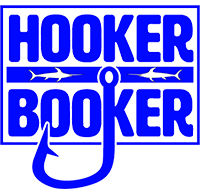Saltwater fishing presents a vast array of angling opportunities, sweeping open spaces, ample (often extensive) sport fish species, and technical challenges. But the immense seas can be daunting for some anglers. Where do you begin? What do you use? And how in the world do you locate fish? For starters, our experts on finding “saltwater fishing near me” want you to imagine you’re fishing from shore and then learn about boats and saltwater later.
In all fishing circumstances—freshwater, saltwater, fly fishing, bait fishing, whatever—you have to ask yourself a couple of straightforward questions: where will the fish be moving (or assembling), and what do they eat?
In saltwater, as in every lake or river, the response to the “where fish are likely to be” inquiry circles around currents and structures (like rocks, reefs, dock pilings, and so on). In addition, large fish will exist where the bait is. While schools of bait will gather together in the open ocean, bait fish often cling to structures near the shore, and having moving water is an advantage. Also, look for slight depressions off the beach; patches of seagrasses and other foliage are commonly bait magnets.
A uniquely vital element of saltwater fishing is that water and the fish move with the tides. Both incoming and outgoing tides include advantages, depending on your location. There’s no way to better comprehend the tides and the best way to fish them than to question people at a local tackle shop. The one thing we’ve learned about tides is that every location is different. But, if you get the information that you need to be near a particular point or inlet when the tide is dropping, for instance, you’ve taken part of the guesswork out of the equation.
What to use? That also changes depending on where you are located and what type of fish you are pursuing. But for the novice, we think you can’t go awry with a straightforward spinning rod design. We suggest an 8-foot, medium-heavy rod equipped with a spinning reel loaded with a 10-pound fluorocarbon line. (Someday, you might desire a bigger rod for surf casting or a trimmer finesse rod for jigging near dock pilings, but this is a secure place to begin).
As for baits, we’d go in one of two directions to begin: either utilize a spoon or a bucktail jig. A spoon whirls and glimmers in the water like a baitfish (it’s best to go with chrome and silver, with inflections of green, blue, chartreuse, or red), while a weighted bucktail jig bounces along the bottom, drawing the attention of fish that consume crabs, shrimp, and so on.
Finally, it comes down to completing casts, gaining experience, and finding your way. If you’re arranging a beach vacation, bring a rod, that’s usually the best place to begin.
Use these tips to get started with saltwater fishing. Then, visit our homepage and search for “saltwater fishing near me.”



Comment (0)